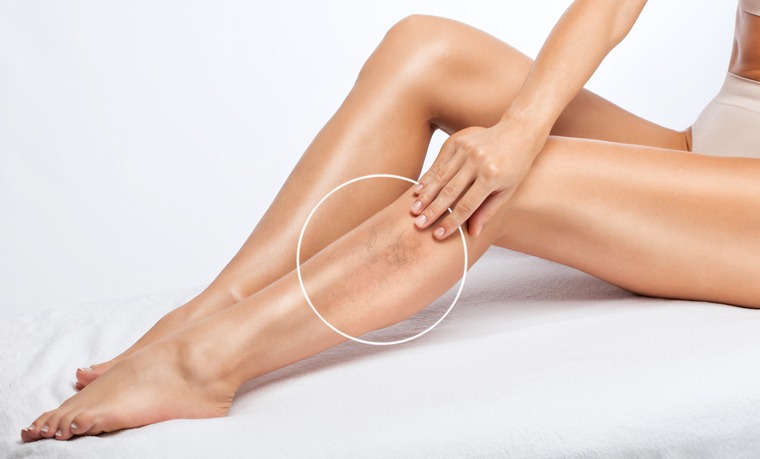Veins are an essential part of the circulatory system, responsible for carrying blood back to the heart from the body’s various organs and tissues. However, sometimes these veins become visibly enlarged, causing unsightly and often uncomfortable symptoms.
Two of the most common types of vein problems are spider veins and varicose veins. Although the two conditions may seem similar, there are significant differences between them. What are the differences between spider veins and varicose veins? How can you best manage these issues?
Read on and we’ll walk you through what you need to know.
What are Spider Veins?
Spider veins, also known as telangiectasia, are small, thin veins that appear close to the skin’s surface. They often resemble spider webs or tree branches. They can be blue, red, or purple.
Spider veins typically develop on the face or legs, although they can occur anywhere on the body. While they may cause some discomfort, they are generally considered cosmetic problems rather than medical ones.
Spider veins can be caused by a variety of factors, including age, genetics, pregnancy, hormonal changes, and obesity. They may also result from prolonged periods of standing, sitting, sun exposure, or trauma.
Although they may be unsightly, spider veins are typically harmless and do not require treatment. However, if they are causing discomfort or embarrassment, there are various treatment options available.
Some of the most common treatments for spider veins include sclerotherapy and laser therapy.
What Are Varicose Veins?
Varicose veins are larger, visible veins that are twisted and swollen. They are often blue or purple and appear on the legs, feet, and ankles.
Varicose veins occur when the valves in the veins are damaged or weakened, causing blood to flow backward and pool in the veins. This causes the veins to stretch and become enlarged.
Varicose veins can be painful and cause discomfort, swelling, and fatigue. They may also cause skin changes, such as discoloration or ulceration. Risk factors for varicose veins include genetics, age, gender, obesity, and pregnancy.
The varicose vein treatment options include compression stockings, sclerotherapy, endovenous laser therapy, and surgery.
Spider Veins vs. Varicose Veins
Spider veins and varicose veins are different in several ways.
Spider veins are smaller and thinner than varicose veins and usually appear on the surface of the skin. They are typically red or blue and are not usually painful. Varicose veins are larger and can cause discomfort, swelling, and pain.
Spider veins are more of a cosmetic concern, while varicose veins can be a medical concern. However, both conditions can be treated with various procedures, including laser therapy and sclerotherapy.
It is essential to seek medical advice if you have any concerns about your veins or if you experience any discomfort or pain.
Difference Between Types of Noticeable Veins
Spider veins and varicose veins are two different conditions that affect the body.
Spider veins are smaller and typically a cosmetic concern. Varicose veins are larger and can cause medical problems.
While there are treatments available for both conditions, taking preventative steps can help reduce your risk of developing them.
Have more questions about your health? Keep scrolling through our blog for more.

